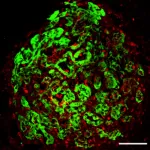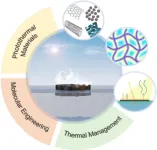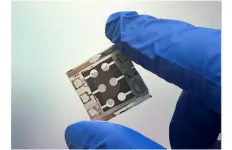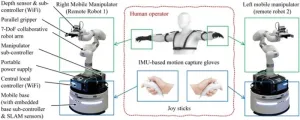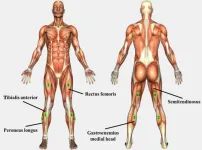(Press-News.org) Cedars-Sinai investigators are developing a novel way to treat amyotrophic lateral sclerosis (ALS) and retinitis pigmentosa using engineered stem cells that may eventually lead to personalized treatments.
The new approach uses cells derived from human induced pluripotent stem cells (iPSCs) that are renewable and scalable, and also can delay the progression of these neurodegenerative diseases in rodents.
This research, published in the journal Stem Cell Reports, marks an important first step toward achieving more personalized therapies for people with these debilitating conditions that currently have no cures.
“In the past, we have had an enormous success using expanded populations of neural progenitor cells derived from human brain tissue combined with gene therapy in developing new treatments for patients with ALS,” said Clive Svendsen, PhD, executive director of the Cedars-Sinai Board of Governors Regenerative Medicine Institute and professor of Biomedical Sciences and Medicine.
The team previously showed that neural progenitor cells can be engineered to produce a protein called glial cell line-derived neurotrophic factor (GDNF), which helps sustain diseased neurons.
This product was safely transplanted in the spinal cord of patients with ALS in a recently completed trial. And after a one-time treatment, the cells can survive and produce the critical GDNF protein for over three years, thereby potentially protecting motor neurons that die in ALS. These neural progenitor cells are also used in an ongoing trial for retinitis pigmentosa.
“However, the cell lines we are using in the clinic are coming from a single source and are going to eventually run out. We just don’t have endless product,” said Svendsen, who is also the Kerry and Simone Vickar Family Foundation Distinguished Chair in Regenerative Medicine at Cedars-Sinai. “Induced pluripotent stem cells provide a renewable source and allow us to develop a more sustainable product that can be engineered to release powerful growth factors.”
Scientists are finding cell and gene therapies to hold great promise in treating a variety of diseases, including hard-to-treat neurodegenerative diseases like ALS and retinitis pigmentosa. After transplantation, stem cells generate support cells that release the engineered drug to provide support to degenerating neurons. Yet limitations that can hinder widespread use and commercialization of these therapies include insufficient tissue availability and potential rejection of the cells by the patient.
“Being able to minimize immune interactions by engineering a patient's own cells and then turning that into a precision medicine therapy has very strong potential,” said Alexander Laperle, PhD, a project scientist in the Svendsen Laboratory and co-first author of the study.
To test the iPSC-based therapy, the team engineered iPSC-derived neural progenitor cells to produce GDNF, to see if it could be used to treat diseases that cause nervous system cells to die, such as ALS and retinal degeneration.
The investigators found that putting these iPSC-derived neural progenitors into the eyes of rodents with retinal degeneration led to protection of the cells in the eye that support vision.
When the team transplanted the same cells into the spinal cords of rodents with ALS, they found the cells helped protect the spinal cord cells that control movement. They also found that these cells were safe and did not cause tumors or other problems when transplanted into the animals for several months.
“We saw that the cells survived and integrated into the spinal cord,” said co-first author Alexandra Moser, PhD, a postdoctoral fellow in the Svendsen Laboratory. “They also largely formed astrocytes, which are protective and supportive cells, and we found they continued to produce GDNF. Most importantly, they didn't form tumors.”
“We have successfully shown that we can develop human iPSCs that stably produce GDNF as a promising future cell and gene therapy,” said Laperle.
While the research results showed promise, more preclinical studies are needed to determine the optimal treatment level, noted Moser. The team is currently looking at ways to improve the expansion of these cells and the scalability of that process.
The paper will also be part of a special issue of Stem Cell Reports on clinical translation of iPSC products, which is scheduled to publish in July 2023.
END
Engineering the next generation of cell and gene therapies
Cedars-Sinai investigators found using expandable engineered cells is a promising new strategy to treat neurodegenerative diseases
2023-04-20
ELSE PRESS RELEASES FROM THIS DATE:
New lung immuno-oncology therapeutic strategy identified
2023-04-20
New York, NY (April 20, 2023)—Researchers at the Icahn School of Medicine at Mount Sinai have demonstrated in a preclinical study a potential new therapeutic approach to treating the most common form of lung cancer.
The strategy involves inhibiting the immune-system molecule TREM2 while enhancing natural killer cells (the so-called protectors of the immune system). It was described in the April 20 online issue of Nature Immunology [DOI: 10.1038/s41590-023-01475-4] https://www.nature.com/articles/s41590-023-01475-4.
“Our study reveals that macrophages expressing the molecule TREM2 drive the depletion and dysfunction of effector ...
Cancer survivor gives $10 million to speed translational research and clinical trials
2023-04-20
HOUSTON ― Vijay Goradia, a Houston-based businessman, philanthropist, and cancer survivor, has donated $10 million to The University of Texas MD Anderson Cancer Center to speed translational research and clinical trials. An initial allocation of $3.5 million will fund the institution’s clinical trial of a CD70-targeted chimeric antigen receptor (CAR) natural killer (NK) cell therapy for patients with renal cell carcinoma (RCC), developed by Katy Rezvani, M.D., Ph.D., professor of Stem Cell Transplantation and Cellular Therapy.
“We are focused on supporting the innovation ...
Quantum entanglement could make accelerometers and dark matter sensors more accurate
2023-04-20
ANN ARBOR—The "spooky action at a distance" that once unnerved Einstein may be on its way to being as pedestrian as the gyroscopes that currently measure acceleration in smartphones.
Quantum entanglement significantly improves the precision of sensors that can be used to navigate without GPS, according to a new study in Nature Photonics.
"By exploiting entanglement, we improve both measurement sensitivity and how quickly we can make the measurement," said Zheshen Zhang, associate professor of electrical and computer engineering at the University ...
Opportunities and challenges for geological and hydrogeological work in China in the new era
2023-04-20
The paper is an important speech made by Min Wang, Vice Minister of the former Ministry of Land and Resources of the PRC, at the seminar “Groundwater and Healthy & Green Development”, which indicated the problems of geological and hydrogeological work over the past decades, and what should we do next. Although significant progress in geological work has been made in China, there are still many challenges need to be done, “going one step further” is very important. It is necessary to promote the transformation of geological work, ...
Research team publishes review study of interfacial solar evaporation systems
2023-04-20
Freshwater is essential for human life and the scarcity of freshwater is a critical issue in parts of the world today. In recent years, scientists have put great efforts into developing desalination technologies so that clean water can be produced from seawater. Interfacial solar evaporation (ISE) is a technology that holds promise for helping to relieve worldwide freshwater shortages. A team of researchers has undertaken a review study of the strategies available for constructing efficient ISE systems.
Their ...
Sleeping pill reduces levels of Alzheimer’s proteins
2023-04-20
Sleep disturbances can be an early sign of Alzheimer’s disease. Many people eventually diagnosed with Alzheimer’s start experiencing difficulty falling and staying asleep years before cognitive problems such as memory loss and confusion emerge. It’s a vicious cycle: Alzheimer’s disease involves changes to the brain that disrupt sleep, and poor sleep accelerates harmful changes to the brain.
Researchers at Washington University School of Medicine in St. Louis have identified a possible way to help break that cycle. A small, two-night study has shown that people who took a sleeping pill before bed experienced a drop in the levels of key Alzheimer’s ...
One-step solution-coating method to advance perovskite solar cell manufacturing and commercialization
2023-04-20
Perovskite solar cells (PSCs) are considered a promising candidate for next-generation photovoltaic technology with high efficiency and low production cost, potentially revolutionizing the renewable energy industry. However, the existing layer-by-layer manufacturing process presents challenges that have hindered the commercialisation of this technology. Recently, researchers from City University of Hong Kong (CityU) and the National Renewable Energy Laboratory (NREL) in the US jointly developed an innovative one-step solution-coating ...
Body extension by using two mobile manipulators
2023-04-20
Imagine lying on a bed, you just have to move your fingers to guide a mobile robot to bring you a cup of water, open the door to fetch some deliveries, or even do some laundry. If you are interested, you may want to learn more about a new remotely operated robotic system based on two mobile manipulators. This system was developed by roboticists from Osaka University. They published a research paper describing this robotic system on Feb. 10 in the journal Cyborg and Bionic Systems.
Back in the year of 2013, Fukushima nuclear power plant witnessed a catastrophic radioactive leakage and contamination, which makes the surrounding area extremely dangerous for ...
Advance care planning produces trend toward less aggressive and more comfort- focused care for patients with cancer
2023-04-20
INDIANAPOLIS – A meta-analysis of studies involving 33,541 cancer patients evaluates the relationship between advance care planning and aggressive vs. comfort-focused end-of-life care. The study, led by Kristin Levoy, PhD, MSN, RN, of the Regenstrief Institute and Indiana University School of Nursing, found a general trend toward less aggressive and more comfort-focused end-of-life care among cancer patients who had engaged in advance care planning, compared to those who did not do so.
Advance care planning is a dynamic process to help prepare people for future decision-making with the goal of ensuring that individuals receive care at the end-of-life that is consistent ...
Ground reaction force and moment estimation through EMG sensing using long short-term memory network during posture coordination
2023-04-20
Imagine by only attaching a number of electromyography (EMG) sensors to your legs, your motion in the future several seconds can be predicted. Such a way of predicting motion via muscle states is an alternative to the mainstream visual cue-based motion prediction, which heavily relies on multi-view cameras to construct time-series posture. However, there is still a gap between muscle states and future movements.
Muscles act upon the ground, which induces ground reaction force. Together with muscle states and ground reaction force, body movements are produced. Therefore, estimating ...
LAST 30 PRESS RELEASES:
Why nail-biting, procrastination and other self-sabotaging behaviors are rooted in survival instincts
Regional variations in mechanical properties of porcine leptomeninges
Artificial empathy in therapy and healthcare: advancements in interpersonal interaction technologies
Why some brains switch gears more efficiently than others
UVA’s Jundong Li wins ICDM’S 2025 Tao Li Award for data mining, machine learning
UVA’s low-power, high-performance computer power player Mircea Stan earns National Academy of Inventors fellowship
Not playing by the rules: USU researcher explores filamentous algae dynamics in rivers
Do our body clocks influence our risk of dementia?
Anthropologists offer new evidence of bipedalism in long-debated fossil discovery
Safer receipt paper from wood
Dosage-sensitive genes suggest no whole-genome duplications in ancestral angiosperm
First ancient human herpesvirus genomes document their deep history with humans
Why Some Bacteria Survive Antibiotics and How to Stop Them - New study reveals that bacteria can survive antibiotic treatment through two fundamentally different “shutdown modes”
UCLA study links scar healing to dangerous placenta condition
CHANGE-seq-BE finds off-target changes in the genome from base editors
The Journal of Nuclear Medicine Ahead-of-Print Tip Sheet: January 2, 2026
Delayed or absent first dose of measles, mumps, and rubella vaccination
Trends in US preterm birth rates by household income and race and ethnicity
Study identifies potential biomarker linked to progression and brain inflammation in multiple sclerosis
Many mothers in Norway do not show up for postnatal check-ups
Researchers want to find out why quick clay is so unstable
Superradiant spins show teamwork at the quantum scale
Cleveland Clinic Research links tumor bacteria to immunotherapy resistance in head and neck cancer
First Editorial of 2026: Resisting AI slop
Joint ground- and space-based observations reveal Saturn-mass rogue planet
Inheritable genetic variant offers protection against blood cancer risk and progression
Pigs settled Pacific islands alongside early human voyagers
A Coral reef’s daily pulse reshapes microbes in surrounding waters
EAST Tokamak experiments exceed plasma density limit, offering new approach to fusion ignition
Groundbreaking discovery reveals Africa’s oldest cremation pyre and complex ritual practices
[Press-News.org] Engineering the next generation of cell and gene therapiesCedars-Sinai investigators found using expandable engineered cells is a promising new strategy to treat neurodegenerative diseases
